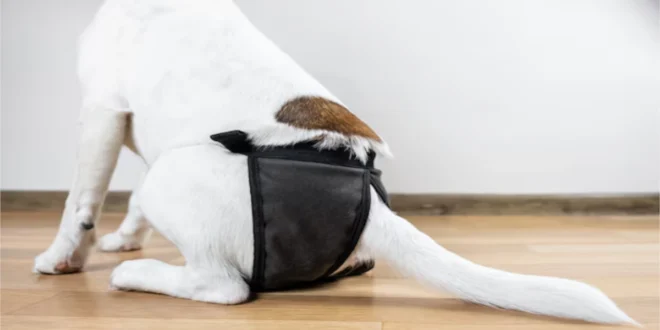Introduction: Why Do Dogs Pant? Understanding This Common Behavior
If you’ve ever spent time with a dog, you’ve likely seen them panting after a long walk, during playtime, or even when they are just sitting still. But have you ever wondered, why do dogs pant? Is it a sign of something serious, or is it simply their way of cooling off? Understanding why dogs pant can help you keep your furry friend comfortable and safe, especially during hot weather or times of stress. In this blog post, we’ll explore the reasons behind panting in dogs, how to distinguish normal panting from problematic panting, and what you can do to help.
What Is Panting?
Panting is a natural, instinctive behavior in dogs. It involves rapid and shallow breathing that allows them to regulate their body temperature. Unlike humans who sweat to cool off, dogs primarily use their panting as their main cooling mechanism. However, panting can also indicate other things such as stress, excitement, or health issues. Understanding the difference between normal and abnormal panting is essential for every dog owner.
The Primary Cause of Panting in Dogs
The most common reason for panting in dogs is to cool down. Dogs don’t sweat the same way humans do, so they rely on other methods, such as panting, to lower their body temperature when they’re too hot.
Why Panting Helps with Cooling
When a dog pants, the rapid airflow over the moist surfaces of their tongue, mouth, and respiratory tract helps evaporate moisture, which cools their body down. This is why you might notice your dog panting more frequently during hot weather or after physical activity. It’s their body’s way of regulating temperature.
Dogs and Heat Sensitivity
Certain breeds, particularly brachycephalic dogs (those with short noses like Bulldogs, Pugs, and Shih Tzus), can pant more frequently due to their difficulty in breathing properly. These breeds are more susceptible to overheating, so you’ll often see them panting even in mild heat. If you live in a hot climate, make sure to provide plenty of water and avoid excessive exercise during the hottest parts of the day.
Other Reasons Why Dogs Pant
While panting is typically a sign of heat regulation, there are several other reasons why your dog might pant more than usual. These can include excitement, anxiety, and even medical conditions. Here are some common reasons for increased panting:
1. Excitement or Happiness
Dogs may pant when they’re excited or feeling happy. If you come home after being away for a while, or if your dog is anticipating a walk or playtime, panting can be a sign of excitement. It’s usually accompanied by wagging tails and playful behavior. This type of panting is normal and typically goes away once the excitement dies down.
2. Anxiety and Stress
Panting is a common sign of anxiety or stress in dogs. If your dog is feeling anxious, they may start panting excessively. Situations that can cause anxiety include being left alone, loud noises such as thunderstorms or fireworks, or trips to the vet. If panting is accompanied by signs of distress, such as pacing, drooling, or whining, anxiety could be the cause.
3. Pain or Discomfort
Panting can sometimes indicate that your dog is in pain. This could be due to an injury, arthritis, or a more serious medical condition. If your dog is panting and also showing signs of limping, sensitivity to touch, or avoiding movement, it may be time to consult with your veterinarian.
4. Illness or Fever
Panting can also be a sign of illness, particularly if your dog is running a fever. Fever raises a dog’s body temperature, causing them to pant in an attempt to cool down. If you notice other signs of illness, such as lethargy, vomiting, or diarrhea, seek veterinary help immediately.
5. Respiratory Issues
Certain respiratory problems can cause a dog to pant excessively. Dogs with respiratory conditions like kennel cough, pneumonia, or collapsed trachea may have difficulty breathing, resulting in rapid panting. If your dog’s panting is accompanied by coughing, wheezing, or labored breathing, it’s important to get them checked by a vet.
6. Heart Problems
Heart disease can also lead to excessive panting in dogs. When a dog’s heart is not functioning properly, it can cause them to breathe rapidly in an attempt to get more oxygen into their bloodstream. If your dog’s panting is coupled with lethargy, coughing, or difficulty exercising, it could be a sign of a heart issue.
How to Determine If Your Dog’s Panting Is Normal
Not all panting is a cause for concern. Here’s a quick guide to help you determine whether your dog’s panting is normal or if it requires attention:
1. Is Your Dog Active?
Panting after a walk or playtime is completely normal. Dogs pant as a way of cooling down after exercise. If your dog’s panting stops once they have a chance to rest, then it’s likely a normal response to physical activity.
2. Does Your Dog Seem Relaxed?
If your dog is panting but seems otherwise calm, relaxed, and comfortable, the panting is probably normal. Dogs often pant when they’re excited or happy, and it’s not always a sign of distress.
3. Are There Other Symptoms?
If your dog’s panting is accompanied by other symptoms like coughing, drooling, or changes in behavior, it could be a sign of something more serious. These symptoms should prompt a visit to the vet.
How to Help a Panting Dog
If your dog’s panting seems to be due to overheating, anxiety, or discomfort, there are several things you can do to help them feel better:
1. Provide Plenty of Water
Always make sure your dog has access to fresh water, especially during hot weather or after exercise. Dehydration can make panting worse and lead to heatstroke if not addressed.
2. Cool Your Dog Down
If your dog is panting due to heat, find a cool area for them to rest. You can also gently wipe them down with a cool, damp cloth to help bring down their body temperature. Avoid using ice-cold water, as this can cause their body temperature to drop too quickly.
3. Minimize Stressful Situations
If your dog is panting due to anxiety, try to identify the source of their stress and reduce it. For example, if thunderstorms make your dog nervous, consider using anxiety-reducing products like calming collars, pheromone diffusers, or anxiety wraps. Providing a safe, quiet space for your dog can also help them feel more secure.
4. Monitor for Health Issues
If your dog’s panting seems unusual or is accompanied by signs of illness, such as lethargy or difficulty breathing, it’s important to consult a veterinarian as soon as possible. Early intervention can make a significant difference in your dog’s health.
When to See a Veterinarian
Most of the time, panting in dogs is nothing to worry about. However, there are situations where it can indicate a health problem. You should consider seeing a veterinarian if:
- Your dog is panting excessively without an obvious cause.
- Their panting is accompanied by coughing, drooling, or difficulty breathing.
- They seem lethargic, weak, or unwilling to exercise.
- There are signs of pain, such as limping or sensitivity to touch.
Common Health Conditions That Cause Panting
- Respiratory infections like kennel cough
- Heart disease such as congestive heart failure
- Heatstroke caused by overheating
- Injuries such as fractures or muscle strain
- Anemia or other blood disorders
If you notice any of these symptoms along with panting, seek professional veterinary care immediately.
Final Thoughts
Panting is a natural and important way for dogs to regulate their body temperature. However, excessive or unusual panting can sometimes indicate underlying issues like anxiety, illness, or respiratory problems. By paying attention to your dog’s panting patterns and behavior, you can help ensure their comfort and well-being. Remember to keep your dog hydrated, provide them with a cool environment when needed, and consult a vet if you’re ever unsure about their health.
Quick Tips for Managing Your Dog’s Panting
| Tip | Explanation |
|---|---|
| Keep Your Dog Hydrated | Always offer fresh water to help with panting caused by heat or exercise. |
| Create a Calm Environment | Minimize stress and anxiety by creating a quiet space, especially during storms or loud noises. |
| Use Cooling Products | Cooling mats or bandanas can help regulate your dog’s temperature in hot weather. |
| Watch for Other Symptoms | If your dog’s panting is paired with other signs of illness, seek veterinary attention. |
By understanding why dogs pant and what it means for their health, you can provide the best care for your furry companion and ensure they’re always happy and healthy.
 Touch Blog
Touch Blog



